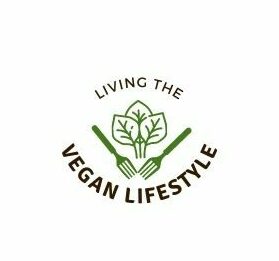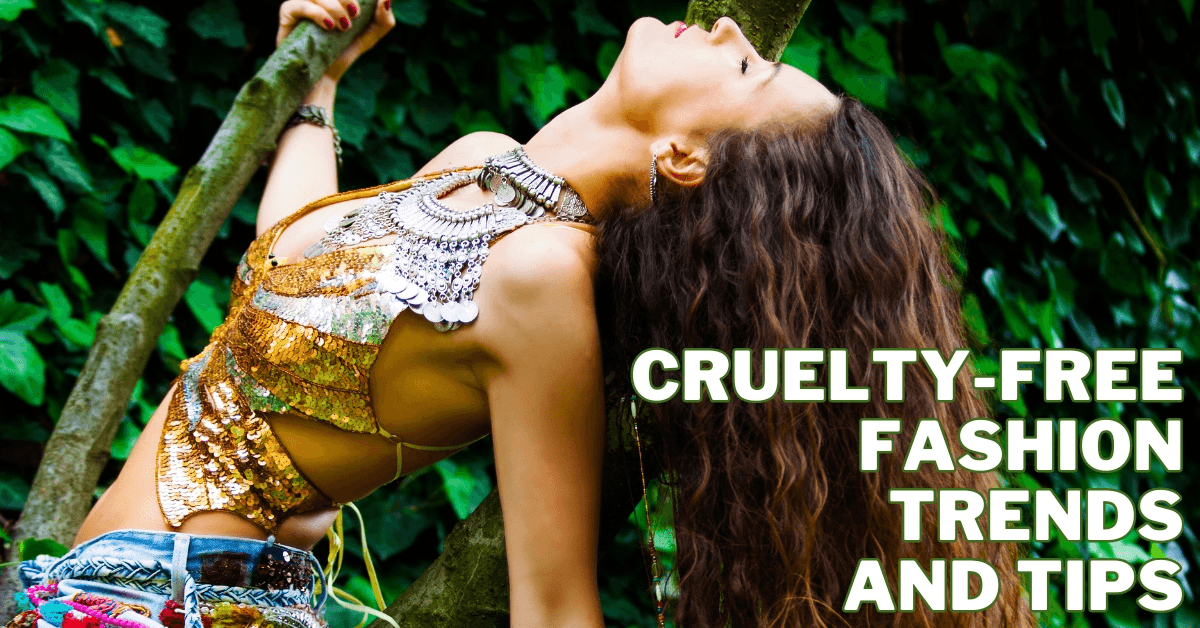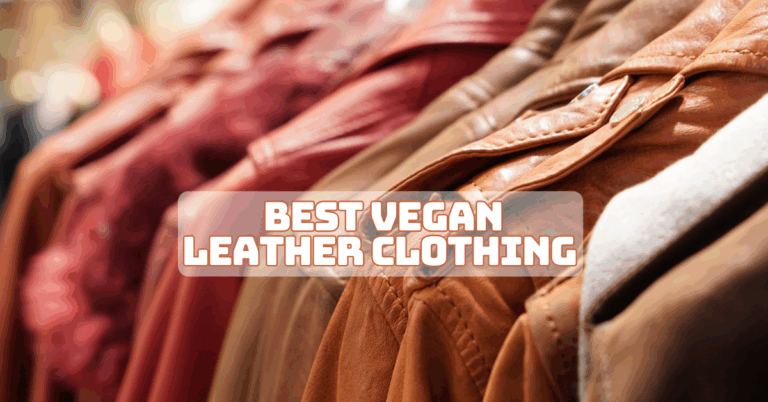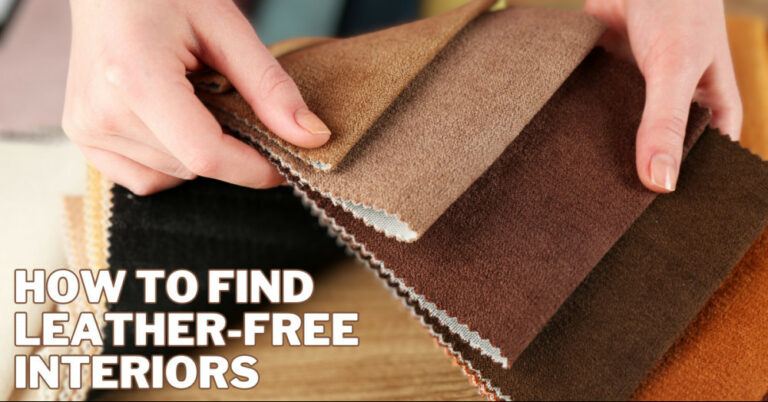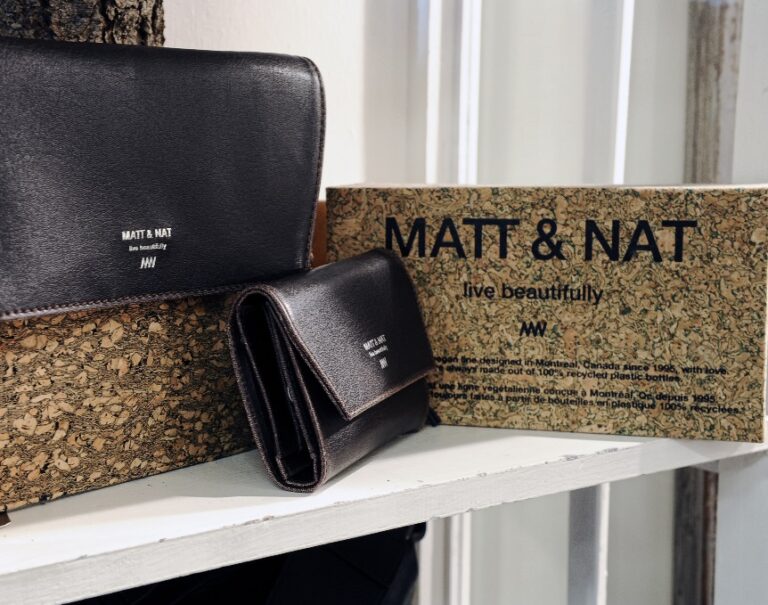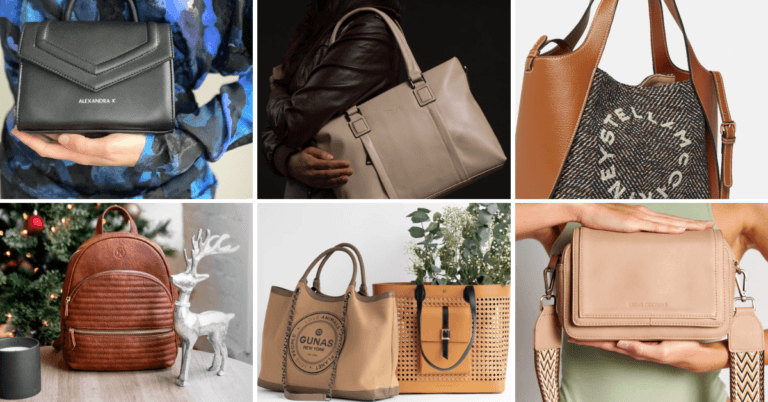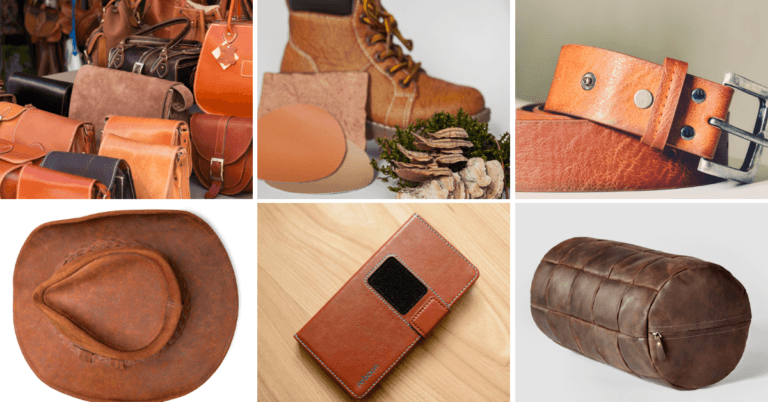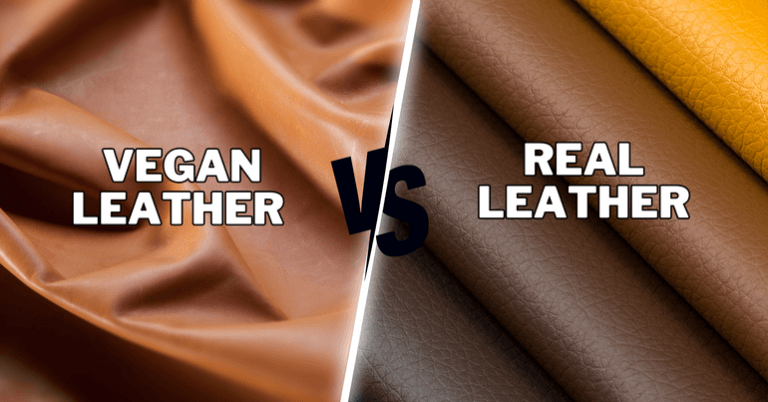Cruelty-Free Fashion Trends And Tips
Cruelty-Free Fashion Trends And Tips
Cruelty-free fashion represents a paradigm shift in the garment industry, prioritizing ethical practices and animal welfare.
This movement advocates for clothing produced without harming or exploiting animals in any stage of the manufacturing process.
From sourcing materials to production and distribution, it aims to minimize environmental impact and promote sustainable practices.
By utilizing alternative materials such as organic cotton, hemp, and innovative vegan leather substitutes, designers and brands are revolutionizing how we perceive and consume fashion.
Embracing it aligns with growing consumer awareness and demand for ethical products, fostering a more compassionate and sustainable future for the industry.

What Is Cruelty-Free Fashion?
Cruelty-free fashion encompasses a movement within the garment industry that prioritizes ethical practices and animal welfare.
Unlike conventional fashion, which often relies on materials derived from animals such as leather, fur, wool, and silk, it advocates for clothing produced without harming or exploiting animals at any stage of the manufacturing process.
This ethos extends beyond materials to encompass production methods that avoid testing on animals and ensure fair labour practices for humans involved in the supply chain.
The concept of this fashion aligns with broader concerns about sustainability and ethical consumption.
It emphasizes the importance of minimizing environmental impact and promoting compassionate practices within the fashion industry.
Many fashion brands and designers use alternative materials such as organic cotton, hemp, bamboo, recycled polyester, and innovative vegan leather substitutes like pineapple leather or mushroom leather.
Embracing It allows consumers to make more conscious choices about their products, reflecting a growing awareness of their fashion decisions' ethical and environmental implications.
As consumers increasingly seek transparency and accountability from brands, this fashion emerges as a response to the demand for more humane, sustainable, and eco-friendly alternatives in the world of apparel and accessories. It promotes ethical practices and animal welfare in garment production.

Why Cruelty-Free Fashion Is Important
Cruelty-free fashion prioritizes ethical practices, avoiding harm to animals. It promotes sustainability, compassion, and accountability in the garment industry. Let’s Explore why cruelty-free fashion is important:
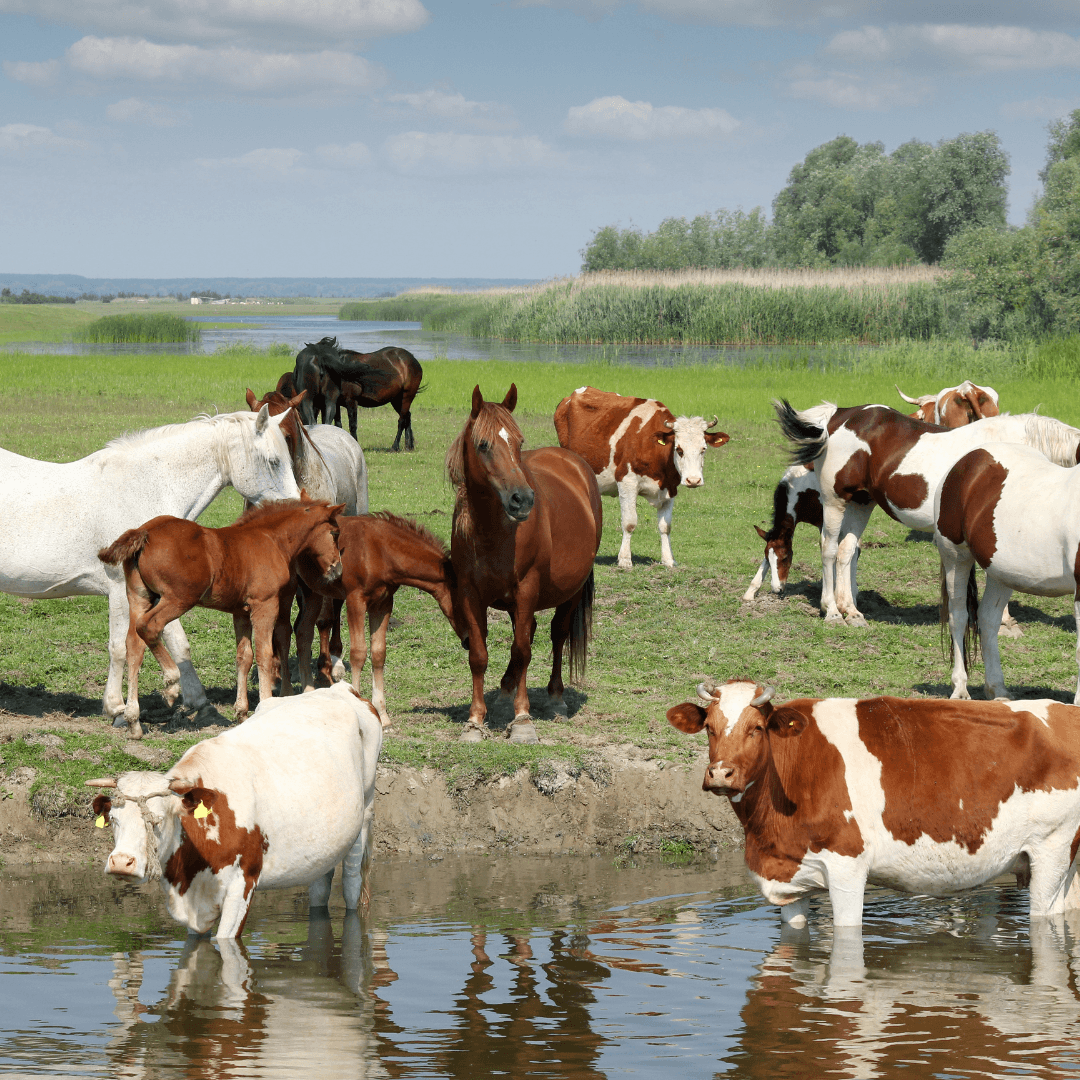
1. Ethical Treatment Of Animals
Cruelty-free fashion champions the ethical treatment of animals by ensuring no harm or exploitation occurs in clothing production.
This commitment aligns with principles of compassion and respect for animal welfare, recognizing the inherent value of all living beings.
By opting for cruelty-free materials and production methods, the fashion industry can minimize the suffering of animals traditionally used for clothing, such as those exploited for fur, leather, wool, or silk.
Embracing this fashion reflects a broader societal shift towards more compassionate and sustainable practices, fostering a culture of empathy and responsibility in consumer choices.
This movement underscores the importance of prioritizing ethical considerations in the fashion industry, promoting a future where fashion is both stylish and conscientious.

2. Environmental Sustainability
The cruelty-free fashion plays a crucial role in environmental sustainability by eschewing materials sourced from animals, such as leather and fur.
This proactive approach mitigates the environmental toll of animal agriculture, which is linked to deforestation, greenhouse gas emissions, and water pollution.
The fashion industry can significantly reduce its ecological footprint by opting for alternative materials like plant-based or synthetic fabrics.
Additionally, it encourages innovation in sustainable textile production, fostering the development of eco-friendly materials that minimize resource consumption and pollution.
Embracing cruelty-free practices aligns with the growing urgency to address climate change and environmental degradation, demonstrating a commitment to responsible stewardship of the planet’s resources for present and future generations.
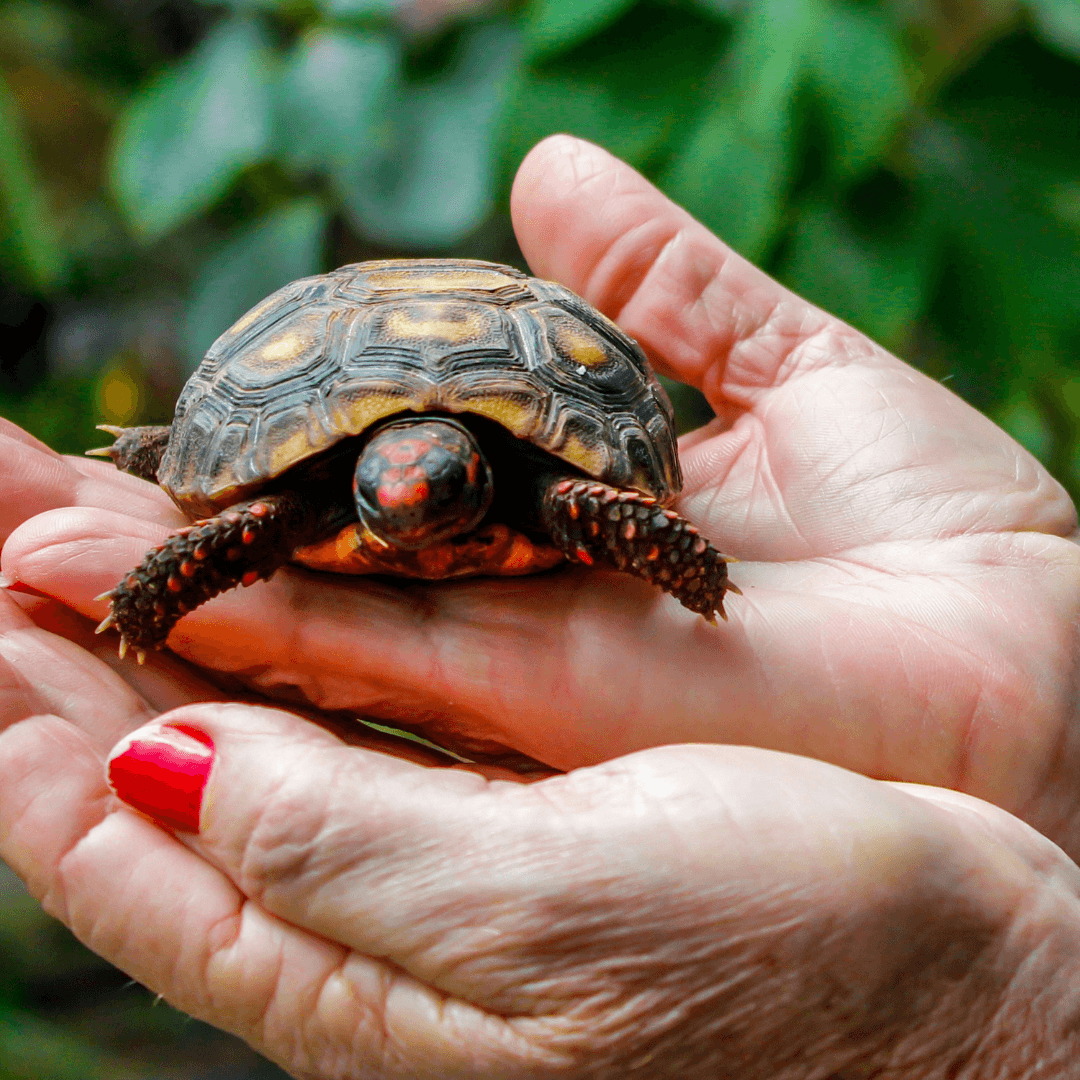
3. Cruelty-Free Fashion Supports The Conservation Of Wildlife
Opting for cruelty-free fashion supports the conservation of wildlife populations by diminishing the demand for materials sourced from endangered or threatened species.
Traditional fashion often relies on materials like exotic animal skins or fur, driving the exploitation and endangerment of various species.
Consumers play a crucial role in reducing the pressure on wildlife habitats and populations by rejecting these materials in favour of cruelty-free alternatives, such as synthetic or plant-based fabrics.
This shift protects endangered species and preserves biodiversity and ecological balance. Individuals can contribute to long-term conservation efforts through conscious consumption choices to safeguard our planet’s diverse and precious wildlife for future generations.
By embracing this fashion, consumers actively promote ethical and sustainable practices, prioritizing wildlife conservation and environmental protection.

4. Reduction Of Carbon Footprint
The cruelty-free fashion significantly contributes to reducing the carbon footprint of the garment industry.
Unlike animal-derived materials, such as leather and wool, which necessitate extensive land use, water consumption, and greenhouse gas emissions associated with animal agriculture, cruelty-free materials typically require fewer resources and emit fewer greenhouse gases during production.
For instance, plant-based fabrics like organic cotton or hemp generally have lower environmental impacts than animal-derived ones.
Moreover, innovations in sustainable textile manufacturing continually improve the efficiency and eco-friendliness of cruelty-free materials.
By prioritizing it, consumers actively support environmentally responsible practices that mitigate climate change and promote a more sustainable future for the fashion industry and the planet.
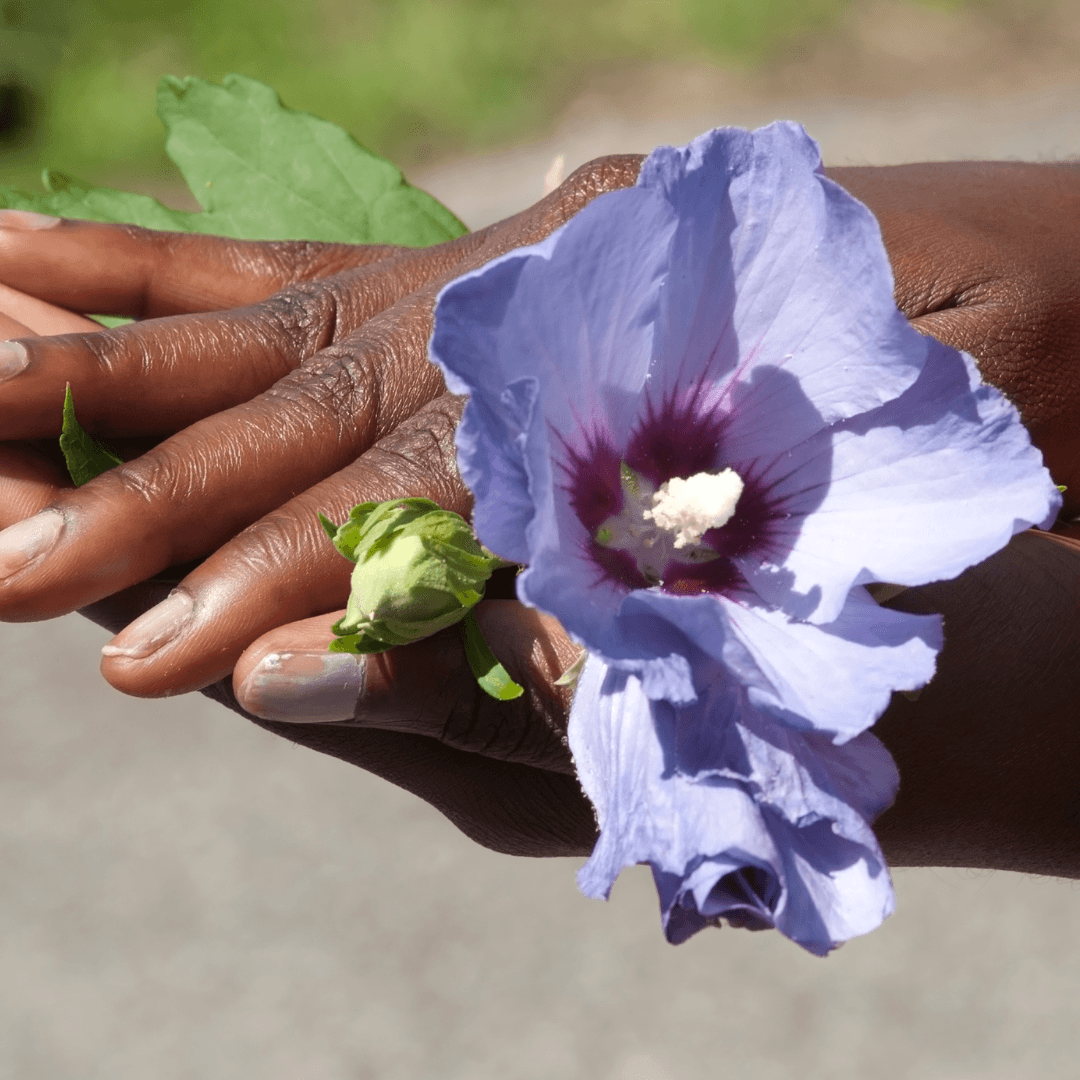
5. Promotion Of Humane Labour Practice
The cruelty-free fashion goes beyond animal welfare by advocating humane labour practices throughout the supply chain.
This commitment ensures that workers involved in clothing production are treated ethically, receiving fair wages and working conditions.
By prioritizing the well-being of workers, it aligns with the principles of social responsibility and ethical consumerism.
Brands and manufacturers adhering to cruelty-free standards often prioritize transparency and accountability, fostering trust and empowerment among their workforce.
Ethical fashion promotes worker rights. It advocates for fair treatment and empowerment of workers.
This emphasis on fair labour practices supports garment workers' livelihoods and promotes social justice and equality within the fashion industry. Consumers drive ethical fashion by helping brands with fair labour practices.

6. Innovation And Creativity
Embracing cruelty-free fashion fosters innovation and creativity within the industry, inspiring designers and brands to explore novel and sustainable materials.
By shifting away from animal-derived materials, such as leather and fur, fashion designers must seek alternative fabrics like plant-based textiles, recycled fibres, and innovative vegan leather substitutes.
This push towards sustainability reduces the industry's environmental footprint and sparks creativity and ingenuity in material innovation.
Moreover, the emphasis on this fashion encourages collaboration between fashion and technology sectors to develop cutting-edge sustainable solutions.
Through experimentation and exploration of eco-friendly materials, designers can redefine conventional notions of luxury and style, leading to a more innovative and sustainable fashion landscape that respects animals and the environment.

7. Consumer Demands
Growing consumer awareness and demand for cruelty-free products have catalyzed significant changes in the fashion industry, prompting a shift towards more ethical and sustainable practices.
As consumers become increasingly conscious of the impact of their purchasing decisions on animals, the environment, and human welfare, they are actively seeking out brands and products that align with their values.
This surge in demand for this fashion has compelled fashion companies to reevaluate their sourcing, production, and marketing strategies, prioritizing transparency and ethical considerations.
Consequently, many brands are incorporating cruelty-free materials, adopting fair labour practices, and implementing eco-friendly production methods to meet consumer expectations and stay competitive. Consumer demand propels fashion towards compassionate, sustainable, ethical practices.

8. Corporate Responsibility
Cruelty-free fashion embodies corporate responsibility by holding brands accountable for their sourcing and production practices.
This movement emphasizes transparency and ethical conduct throughout the supply chain, urging companies to prioritize animal welfare, environmental sustainability, and fair labour practices.
By adopting cruelty-free standards, brands commit to transparent sourcing of materials, ensuring that no animals are harmed or exploited in the making of their products.
Additionally, they strive to minimize their environmental footprint by utilizing sustainable materials and production methods.
This focus on accountability and responsibility not only builds trust with consumers but also fosters a culture of ethical business conduct within the fashion industry.
Ultimately, it sets a precedent for corporate responsibility, demonstrating that profitability can coexist with compassion and sustainability.

9. Global Impact
The global adoption of cruelty-free fashion has the potential to yield substantial positive outcomes for animal welfare, environmental preservation, and human rights on a global scale.
Embracing cruelty-free practices in the fashion industry can mitigate animal suffering, reduce environmental degradation, and promote humane working conditions throughout the supply chain.
This transition signifies a commitment to ethical values and sustainable practices, fostering a more compassionate and responsible approach to fashion production.
Moreover, the ripple effects of this shift extend beyond the fashion sector, influencing broader societal attitudes toward consumption, conservation, and social justice.
By collectively advocating for cruelty-free practices, individuals, businesses, and governments can collaborate to create a more equitable and sustainable world for humans and animals, paving the way for a brighter future.

10. Personal Values Alignment
Selecting cruelty-free fashion empowers individuals to align their purchasing choices with deeply held personal values of compassion, sustainability, and ethical consumption.
Individuals express their commitment to compassion towards all living beings by opting for clothing produced without harming animals.
Furthermore, choosing this fashion supports sustainability by reducing reliance on resource-intensive animal agriculture and promoting eco-friendly materials and production methods.
This conscious decision-making process reflects a dedication to ethical consumption practices, where individuals prioritize the well-being of animals, environmental conservation, and fair labour practices.
Ultimately, it allows individuals to live by their values, contributing to a more compassionate and sustainable world while positively impacting the fashion industry's practices and standards.
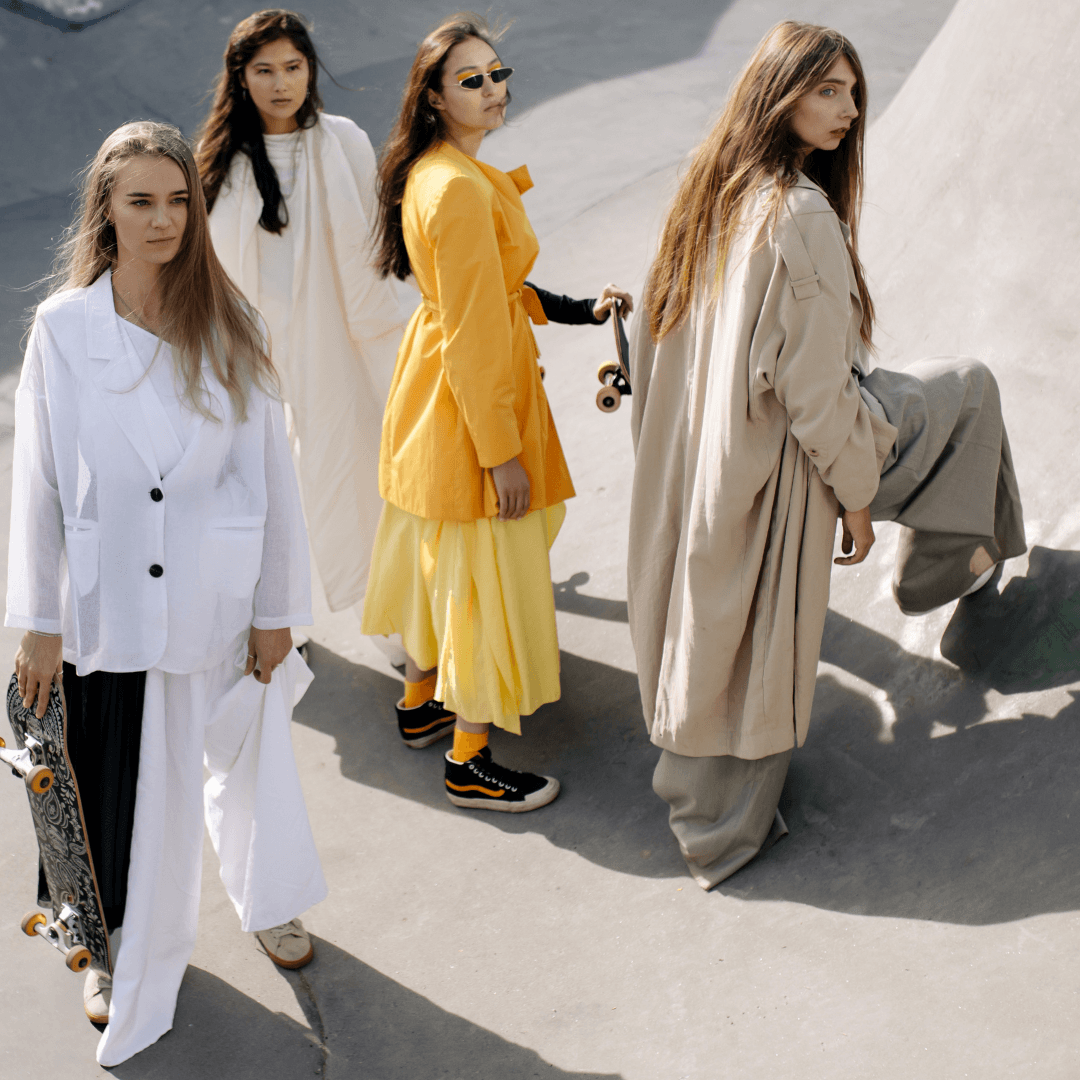
Animal-Friendly Fashion Brands
Animal-friendly fashion brands prioritize compassion and sustainability in their products, offering stylish alternatives to traditional clothing from animal-derived materials.
These brands use innovative materials such as vegan leather, recycled fibres, and plant-based fabrics to create cruelty-free clothing, shoes, and accessories.
Avoiding using leather, fur, wool, and other animal products reduces animal harm and promotes ethical consumption practices. Here are some animal-friendly fashion brands:

1. Stella McCartney
Renowned for its sustainability ethos and cruelty-free principles, Stella McCartney presents a diverse collection of fashion pieces crafted sans leather, fur, or animal-derived materials.
This commitment extends beyond avoiding animal products; it encompasses a holistic approach to ethical and environmentally conscious fashion.
McCartney’s innovative designs showcase the possibilities of using alternative materials, such as vegan leather and recycled fabrics, without compromising style or quality.
With a focus on transparency and accountability, the brand sets a benchmark for ethical fashion, inspiring the industry and consumers to embrace cruelty-free practices and sustainable choices.
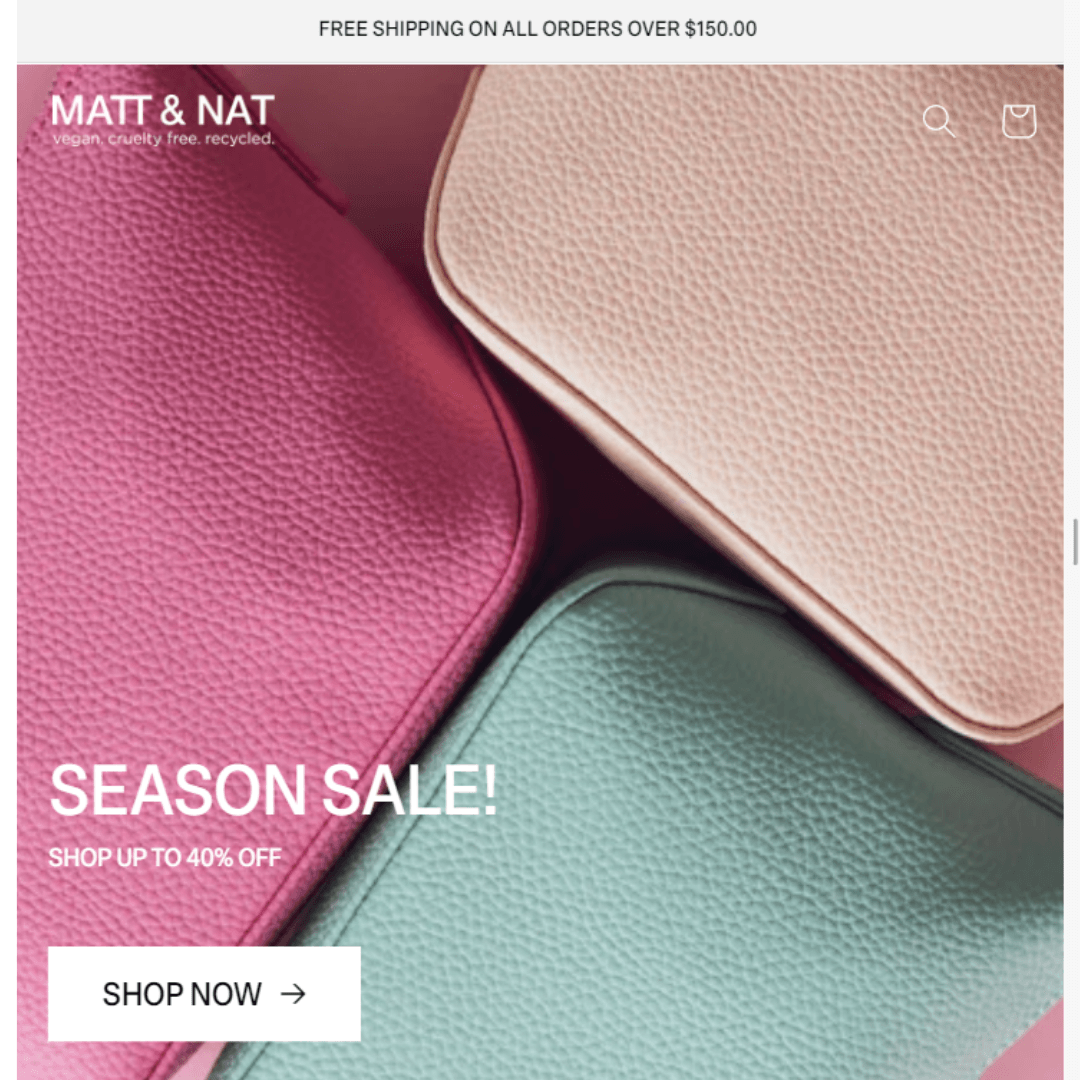
2. Matt & Nat
Specializing in vegan leather goods, Matt & Nat distinguishes itself by crafting bags and accessories exclusively from sustainable materials like recycled nylon, cork, and rubber.
This dedication to eco-friendly sourcing extends beyond the absence of animal products, reflecting a broader commitment to environmental responsibility.
Matt & Nat reduces waste and minimizes its ecological footprint by repurposing materials that would otherwise end up in landfills.
With sleek designs and a focus on durability, their products offer a stylish and conscientious alternative to traditional leather accessories.
Through their innovative approach to fashion, Matt & Nat exemplifies the intersection of style, sustainability, and compassion in the industry.
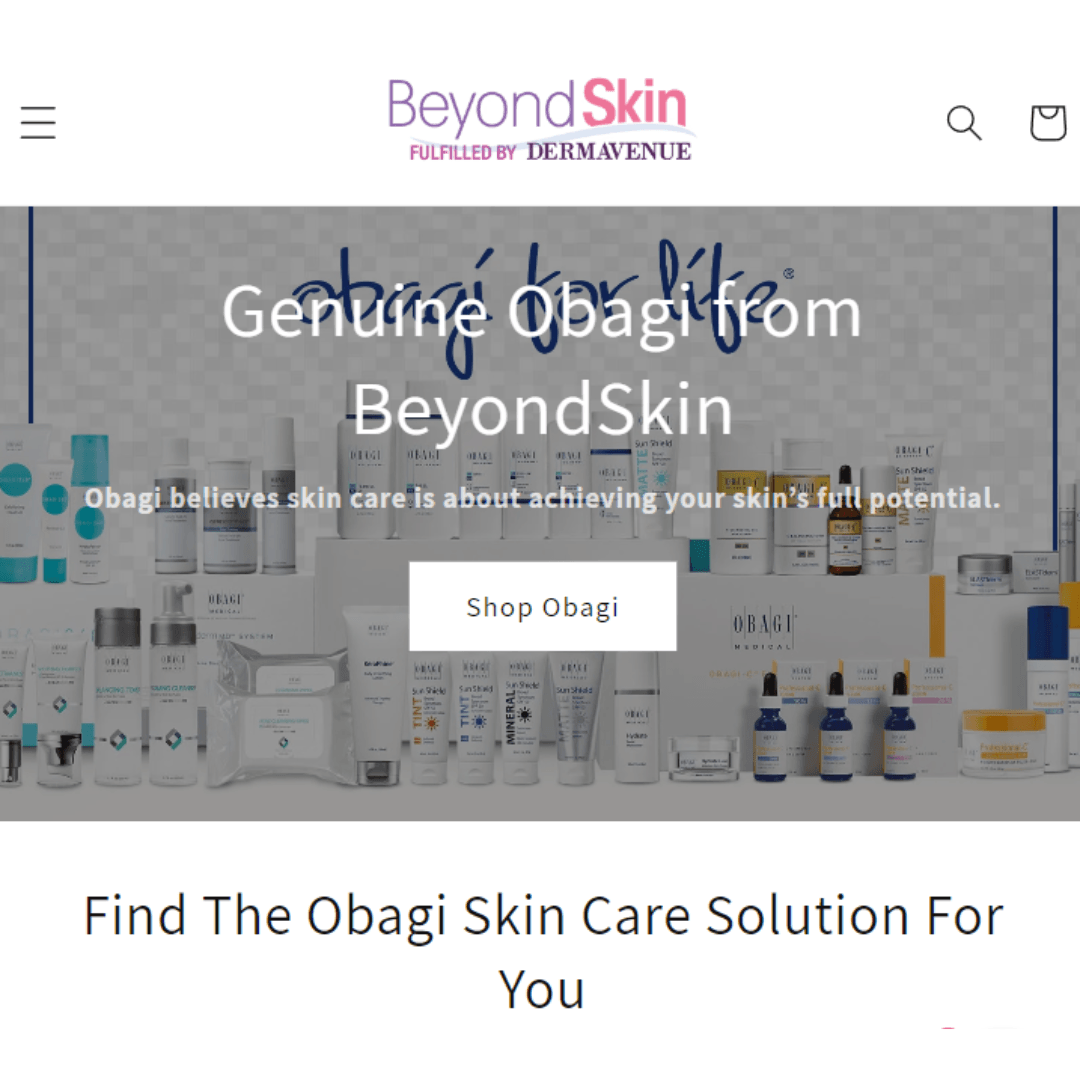
3. Beyond Skin
Beyond Skin offers chic and cruelty-free footwear featuring an array of stylish vegan leather shoes and boots.
Their commitment to ethical practices extends throughout their production process, ensuring that no animals are harmed in creating their products.
With a focus on sustainability and compassion, Beyond Skin provides fashion-forward alternatives to traditional leather footwear, catering to conscientious consumers who prioritize style and ethics.
By opting for Beyond Skin’s cruelty-free footwear, customers make a fashion statement and support ethical and sustainable practices in the fashion industry. Beyond Skin leads in compassionate, eco-friendly footwear.
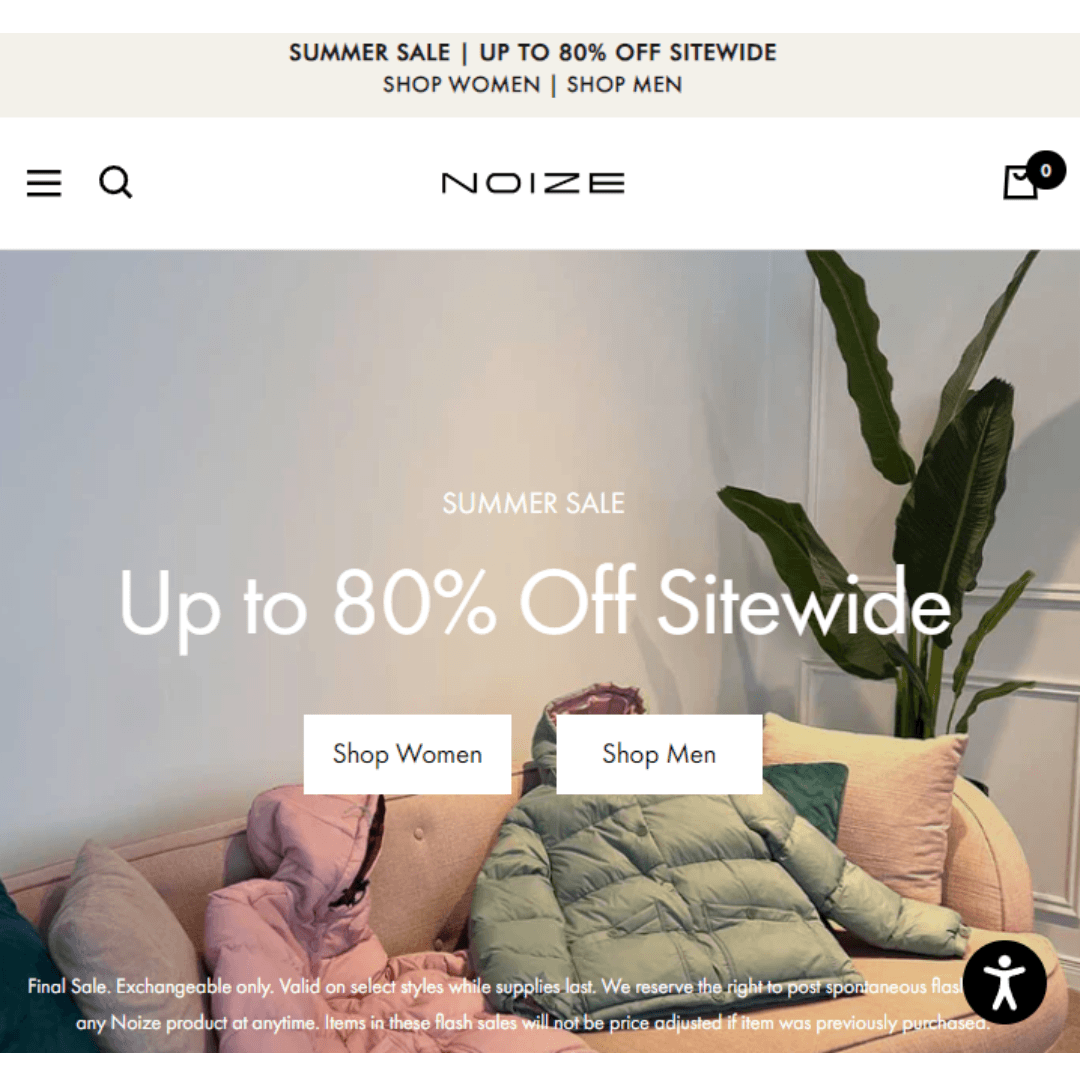
4. Noize
Noize is a cruelty-free outerwear brand specializing in stylish jackets and coats crafted from animal-free materials.
Dedicated to sustainability, they use eco-friendly fabrics like recycled polyester and vegan leather.
Noize is committed to ethical manufacturing, ensuring fair labour practices throughout its supply chain.
The brand offers a wide range of fashionable, high-quality outerwear designed to keep you warm without compromising style or values.
Their mission is to provide affordable, cruelty-free alternatives to traditional outerwear, making it easier for consumers to make compassionate choices.

5. Bhava Studio
Bhava Studio is dedicated to crafting eco-friendly footwear, including shoes, sandals, and boots, all made from sustainable materials like recycled fibres and organic cotton.
With a focus on vegan design principles, the brand ensures its products are free from animal-derived materials, aligning with ethical and environmental values.
Using innovative materials and production techniques, Bhava Studio minimizes its ecological footprint while offering stylish and conscientious footwear options.
Through their commitment to sustainability and cruelty-free practices, Bhava Studio exemplifies the potential for fashion to be both fashionable and eco-conscious, paving the way for a more sustainable future in footwear.
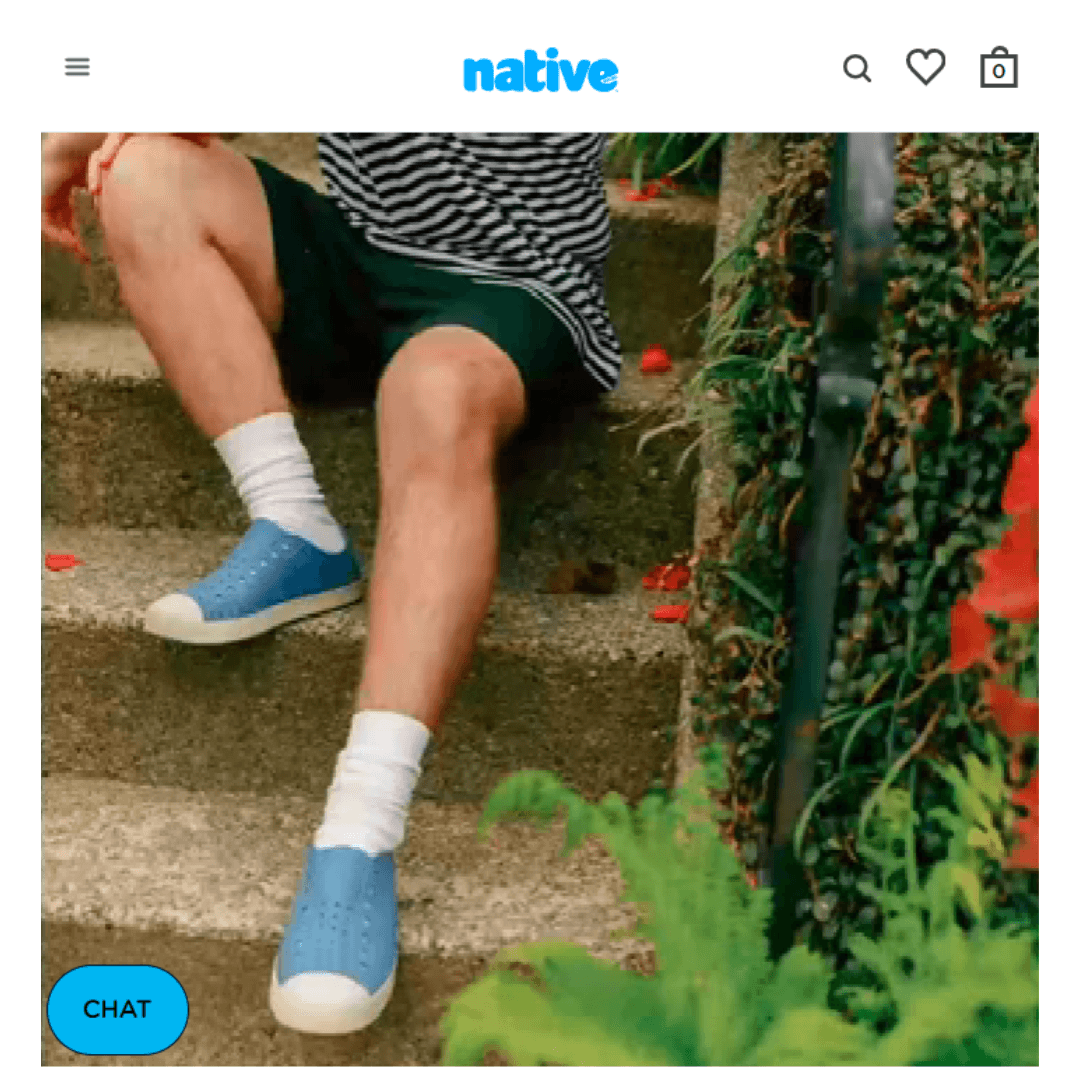
6. Native Shoes
Native Shoes provides a diverse selection of stylish and comfortable footwear options crafted from vegan materials, such as EVA and recycled rubber.
This commitment to cruelty-free materials ensures their products align with ethical and sustainable values.
By opting for vegan materials, Native Shoes minimizes animal harm while reducing environmental impact.
With a focus on innovation and eco-conscious design, the brand offers consumers fashionable footwear that prioritizes comfort and sustainability.
Through their dedication to vegan materials and responsible production practices, Native Shoes sets a precedent for ethical and environmentally friendly footwear options in the fashion industry.
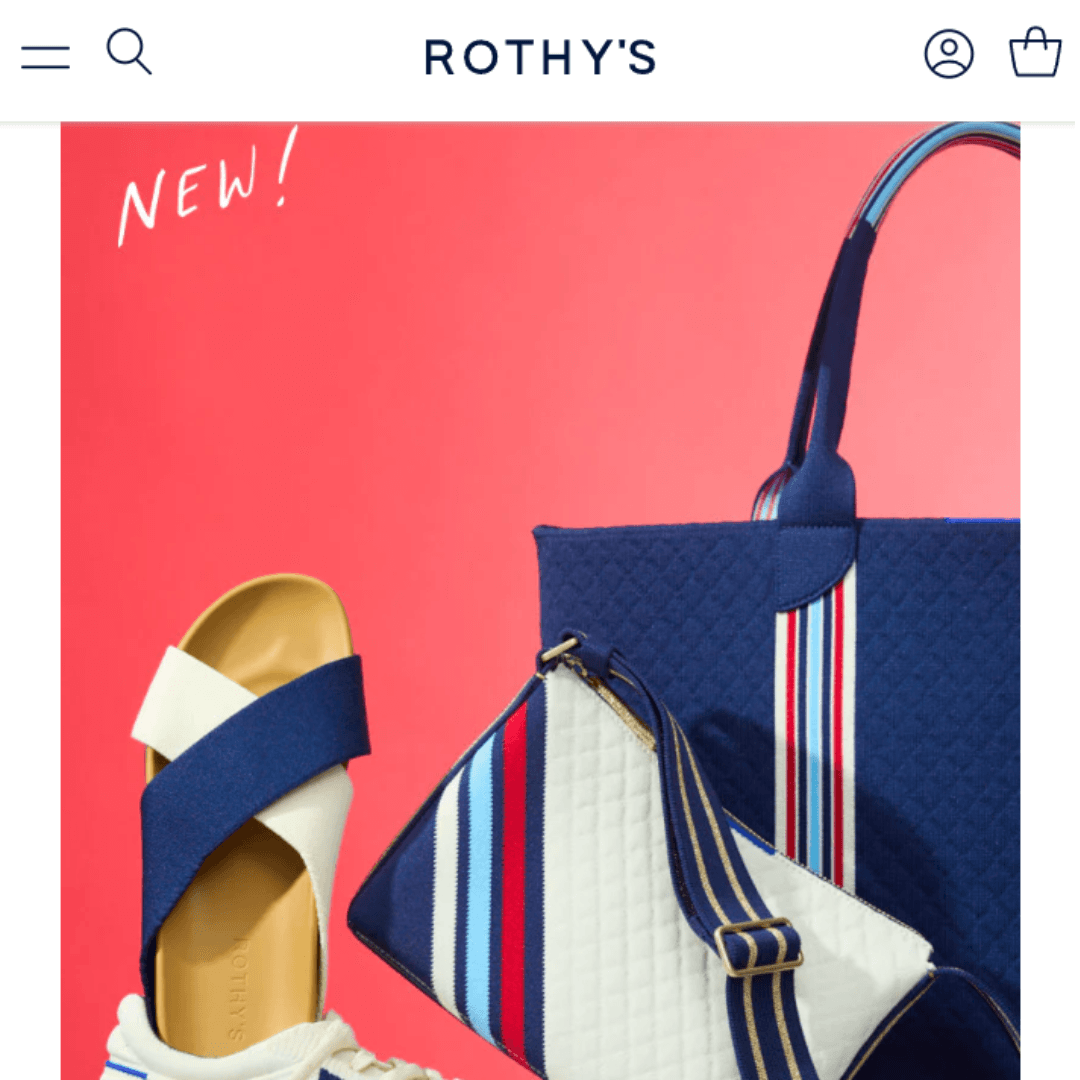
7. Rothy’s
Rothy’s is renowned for its sustainable and vegan footwear collection, featuring flats, sneakers, and loafers crafted from recycled plastic bottles.
The brand uses innovative materials to reduce plastic waste and creates stylish, eco-friendly footwear options.
Rothy’s commitment to sustainability extends beyond its materials; the brand prioritizes ethical production practices and transparent supply chains.
Each pair of shoes reflects a dedication to fashion and environmental responsibility, appealing to conscientious consumers seeking stylish and sustainable footwear.
With their innovative approach and eco-conscious ethos, Rothy’s sets a new standard for environmentally friendly fashion in the footwear industry.

8. Brave GentleMan
Brave GentleMan is a pioneering brand specializing in cruelty-free menswear, offering an array of suits, shirts, and accessories crafted from innovative vegan materials.
With a commitment to ethical principles, the brand ensures that no animals are harmed in producing its products.
By utilizing cutting-edge vegan materials, Brave GentleMan redefines the possibilities of ethical fashion for men, proving that style and compassion can coexist harmoniously.
Each garment embodies the brand’s dedication to sustainability and cruelty-free practices, providing discerning consumers with fashionable yet ethical choices.
Brave GentleMan sets a new benchmark for conscious menswear in the fashion industry through its innovative approach and ethical standards.
FAQ
1. Is Huda Beauty Cruelty-Free And Vegan?
Yes, Huda Beauty is cruelty-free, meaning they do not test their products on animals. However, it’s worth noting that not all of their products are vegan.
While many of their cosmetics do not contain animal-derived ingredients, some may still include ingredients like beeswax or carmine, which are not vegan-friendly.
It's recommended to check the ingredient list or look for products labelled as vegan to ensure they meet your ethical preferences.
Conclusion
In conclusion, cruelty-free fashion represents a pivotal shift towards ethical and sustainable practices in the fashion industry.
By prioritizing compassion for animals, environmental conservation, and fair labour practices, cruelty-free brands are paving the way for a more ethical and sustainable future.
Through innovative materials and transparent production processes, these brands offer stylish alternatives to traditional fashion without compromising on quality or style.
As consumer awareness grows, the demand for this fashion continues to rise, encouraging more brands to adopt ethical and sustainable practices.
Ultimately, embracing this type of fashion benefits animals and the environment and promotes a more conscientious and compassionate approach to fashion consumption.
I trust you enjoyed reading the article about Cruelty-Free Fashion Trends And Tips! Please stay tuned. More blog posts will be posted very shortly.
JeannetteZ
>>>Please click here to read my Vegan Travel Guides To World Destinations<<<
>>>Want To Learn How To Create Delicious, Cruelty-Free, Healthy AND 100% Vegan Meals? Try These Awesome Vegan Cooking Courses With A Free 7-DAY MEMBERSHIP<<<
Your Opinion Is Important To Me
Do you have thoughts, ideas, or questions? I would love to hear from you. Please leave me your questions, experience, and remarks about the Cruelty-Free Fashion Trends And Tips in the comments section below. You can also email me at Jeannette@LivingTheVeganLifestyle.org.
Disclosure
This post may contain affiliate links. I earn from qualifying purchases as an Amazon Associate and other affiliate programs. Please read my full disclosure.
